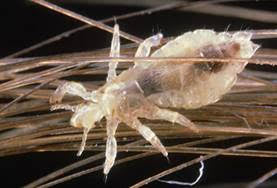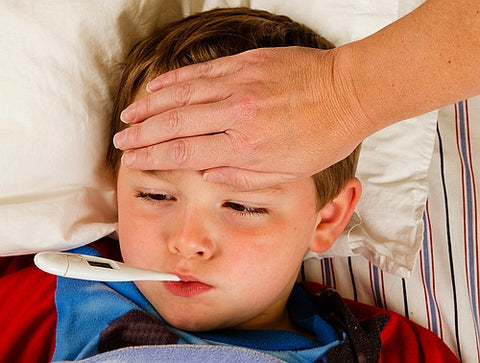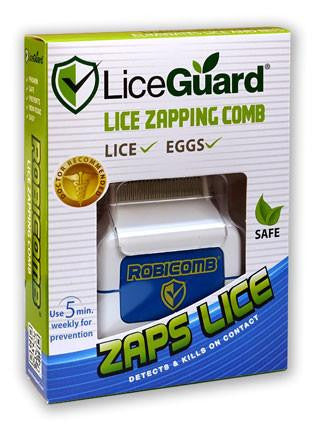The Facts of Lice

What are head lice?
Head lice are small insects that live on the human scalp, feeding on human blood several times a day. These parasites make small bites in the scalp to suck blood and live off of human hosts. The bites do not hurt, but lice excrete a substance to prevent the blood from clotting, which can cause severe itching and allergic reactions. Without a host to feed on, lice will die within 1–2 days.
The Centers for Disease Control and Prevention (CDC) estimate that up to twelve million children aged 3 to 12 contract lice in the United States each year.
Pediatrics, the Official Journal of The American Academy of Pediatrics, cites studies that claim 12 to 24 million days of school annually are lost to lice infestations and schools’ “no nit” policies and that the economic burden for parents is mounting; pharmacotherapy alone costs the United States economy $240 million per year and estimates for direct and indirect costs may be as high as $1 billion per year.

Super Lice!
Lice resistance to Permethrin was reported as early as 1990 by doctors John D. Edman, Medical Entomologist, and John M. Clark, Insecticide Toxicologist, both at the University of Massachusetts at Amherst. Studies in recent years have asserted that up to 75% of lice strains are resistant to Permethrin and Pyrethroids, rendering treatments that contain those agents ineffective.
Because the lice are resistant to these pesticides, this often results in parents shampooing their children again and again with such products, a dangerous endeavor especially if parents are ignoring the shampoos’ own warnings of repeated use and time limits between treatments. According to The National Pediculosis Association (NPA), most of the OTC or prescription treatments used to kill lice contain “potentially harmful pesticides and reliance on them promotes repeated use and contributes to ongoing infestations, outbreaks, and resistant strains of head lice.”

Avoid Toxic Lice Products!
If you come across the words Pyrethrins and Permethrin, consider this: they are neurotoxins. Neurotoxins are exactly what they sound like – toxins that inhibit the functions of neurons. Neurons are found throughout the brain and nervous system, and the function of these cells is critical for a variety of tasks, ranging from autonomic nervous system jobs like swallowing to higher-level brain function. It would seem that the last place you would want to apply a neurotoxin is on your child’s head, wouldn’t it?
Permethrin is a common synthetic chemical, widely used as an insecticide, acaricide, and insect repellent. It belongs to the family of synthetic chemicals called Pyrethroids and functions as a neurotoxin, affecting neuron membranes by prolonging sodium channel activation. It is not known to rapidly harm most mammals or birds, but is dangerously toxic to cats and fish. If a chemical isn’t known to rapidly harm most mammals or birds but is dangerously toxic to cats and fish, would you use it on your child?
According to the Harvard School of Public Health, Permethrin and Pyrethrin have side effects that range from neurological disorders to cancer and, in some cases, have been linked to documented deaths.
What’s crazy is that 70% of the market is dominated by the “big brand” OTC lice treatment shampoos and ointments that contain Permethrin!

Ensure it Works!
The mounting persistence of lice infestations coupled with the repeated use and lack of efficacy of treatment products has resulted in a range of complaints in recent years fielded by the FDA. From January 2005 through October 2010, the FDA’s Adverse Event Reporting System documented complaints involving:
- 12 deaths relating to prescription-based pesticides Lindane and Malthion.
- 6 deaths (including 2 suicides) relating to OTC pesticide Permethrin.
- Other reports described conditions such as shortness of breath, hallucinations, and nausea.
Products touting themselves as “all-natural” do not fare much better from an efficacy perspective. Various ‘natural’ remedies are vigorously marketed on the internet but there is no scientific basis for their claims of efficacy and human safety. Non-toxic remedies are obviously a preferred choice over pesticides whenever possible. However, this does not mean that everything touted as ‘natural’ is across-the-board safe. Many who try ‘alternatives’ have already had failure with readily available pediculicides from local drugstores. If there is success with such alternatives, we suspect that it may have to do with motivation and the ‘parent power’ behind the effort - rather than any particular pediculicidal or ovicidal property.




